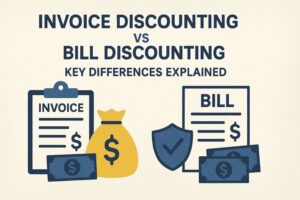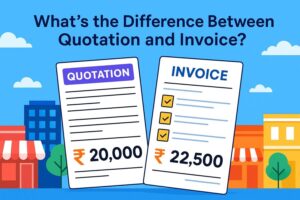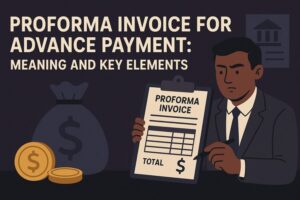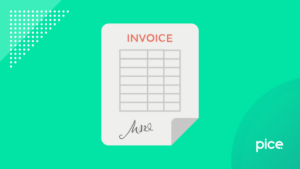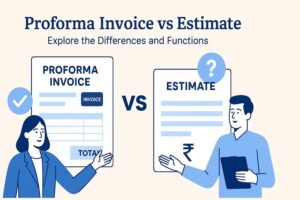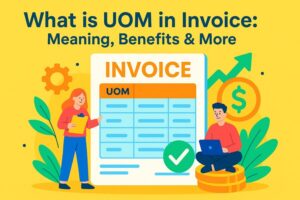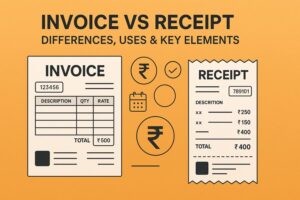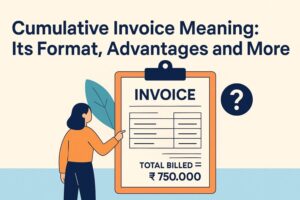What is a Proforma Invoice Under GST? Meaning, Uses, Structure and Examples
- 4 Nov 25
- 10 mins

What is a Proforma Invoice Under GST? Meaning, Uses, Structure and Examples
- What is a Proforma Invoice?
- When is it Right to Use a Proforma Invoice?
- What are the Mandatory Fields in a Proforma Invoice?
- Key Differences Between a Proforma Invoice and Related Documents
- What are the Benefits of Using a Proforma Invoice?
- Challenges Associated With the Use of Proforma Invoices
- Conclusion
Key Takeaways
- A proforma invoice is a preliminary version of the final invoice, sent to the buyer before confirming a sale. It details products or services, pricing, delivery dates, and terms for review and approval.
- Businesses issue proforma invoices to formalize estimates, facilitate negotiations, and help buyers arrange finances or approvals, especially in B2B and international trade.
- Essential elements include the title (“Proforma Invoice”), buyer and seller details, invoice and expiry dates, item descriptions, quantities, rates, taxes, and total amount.
- Proforma invoices ensure clarity, transparency, and professionalism, ease negotiations, support financial planning, speed up purchase approvals, and reduce post-sale disputes.
- As non-binding documents, proforma invoices don’t guarantee payment, may cause confusion with final invoices, and can add to administrative work, hence automation or digital tools (like Pice) can help streamline the process.
Before finalising a deal, businesses negotiate multiple aspects, such as discounts, project delivery dates, and selling price. Once this discussion phase is complete, most companies send a preliminary invoice to the buyer to provide a fair estimate.
As the annual growth rate of the accounts payable market in India is projected to increase by 2.70% until 2033, it is advisable to issue proforma invoices to ensure better compliance. If you do not have a clear idea about what is a proforma invoice and when to use it, continue reading this guide.
What is a Proforma Invoice?
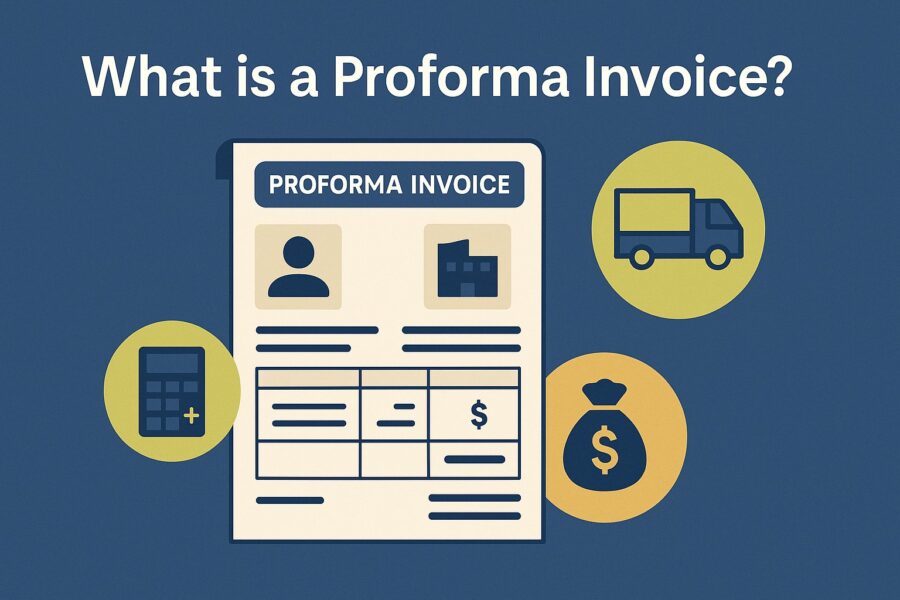
Proforma invoice serve as a preliminary version of the final invoice, provided to a buyer before any sales confirmation. Widely used in B2B transactions, these documents list the supplies to be delivered, their values, delivery date, shipping information, etc.
After a detailed review of the proforma invoice, the buyer approves the stated terms. Next, the sender can proceed with their part, whether supplying a product or providing a service, and subsequently issue the sales invoice.
When is it Right to Use a Proforma Invoice?
It is a good idea to use a proforma invoice before a sale is completed when a buyer is committed; however, the final details are still being worked out.
Suppose a retailer agrees to place an order for 80 units of Smart TVs, each priced at ₹35,000. It sums up to a preliminary order value of ₹28 lakhs. To complete the deal, the retailer must take a loan, but is still negotiating payment schedules and delivery dates with the supplier.
By requesting a proforma invoice from the wholesaler, the retailer can receive a formal document estimating the total cost, including projected taxes. This would ideally add an 18% GST on the total bill amount, making an estimated total of ₹33.04 lakhs.
To apply for a loan, the retailer can now provide this proforma invoice to their bank. It will illustrate all the upcoming financial obligations before finalising the contract.
In addition to the example above, these are everyday situations where businesses use proforma invoices:
- International Trade: Exporters frequently issue proforma invoices to potential buyers. It helps to receive advance funding agreements and letters of credit.
- Pre-Payment Agreements: Real estate firms can issue preliminary invoices to their customers to obtain upfront funds necessary to keep a project running.
- Customs Clearance: During international exports, various customs documents may require a proforma invoice to verify the shipment’s materials and approximate value.
- Internal Approvals: Proforma invoices are also important when purchasing business supplies, ensuring all departments agree on the terms and pricing of the transaction.
Thus, at any stage of transaction negotiation, a supplier can generate a proforma invoice and send it to the prospective customer. This enables both parties to negotiate and finalise pricing and other key terms before concluding a deal.
What are the Mandatory Fields in a Proforma Invoice?
A proforma invoice does not need to adhere to a strict format like a standard invoice. Instead, it should include all information relevant to the transaction at the time of its creation.
If you compare the appearance of a proforma invoice with that of a sales invoice, the most significant difference you are likely to notice is the invoice number. While the final sales invoice must have a unique number, this element is usually skipped in preliminary invoices.
However, the fields listed below are necessary on a proforma invoice:
- Title of the document specifying ‘Proforma Invoice’
- Particulars of the buyer like their name, billing address and shipping address
- Seller details like the name of the company and its address
- Preliminary invoice generation date
- Invoice expiration date
- Payment terms
- Description of the deliverables (services or goods)
- The individual prices of the products or services
- Total quantity of the deliverables
- Discounts (if any)
- Taxes (if applicable)
- Sum Total
To better grasp the idea of what a proforma invoice looks like, please take a look at the sample below:
| Company Logo | PROFORMA INVOICEPROINV-000123 | |||
| Seller/ Company NameAddress | ||||
| Bill To:Buyer NameBilling Address | Invoice Date:Expiry Date: | 5 Aug 20254 Sep 2025 | ||
| Item Description | Quantity | Rate (₹) | Amount(₹) | |
| Item 1 | 1 | 500 | 500 | |
| Item 2 | 2 | 450 | 900 | |
| Item 3 | 1 | 200 | 200 | |
| Sub Total | 1,600 | |||
| GST (18%) | 288 | |||
| Total | 1,888 | |||
| Notes: Looking forward to your approval | ||||
| Terms and Conditions: Do not pay. This is a proforma invoice. | ||||
You can modify certain elements of this proforma invoice template to suit your specific requirements.
Key Differences Between a Proforma Invoice and Related Documents
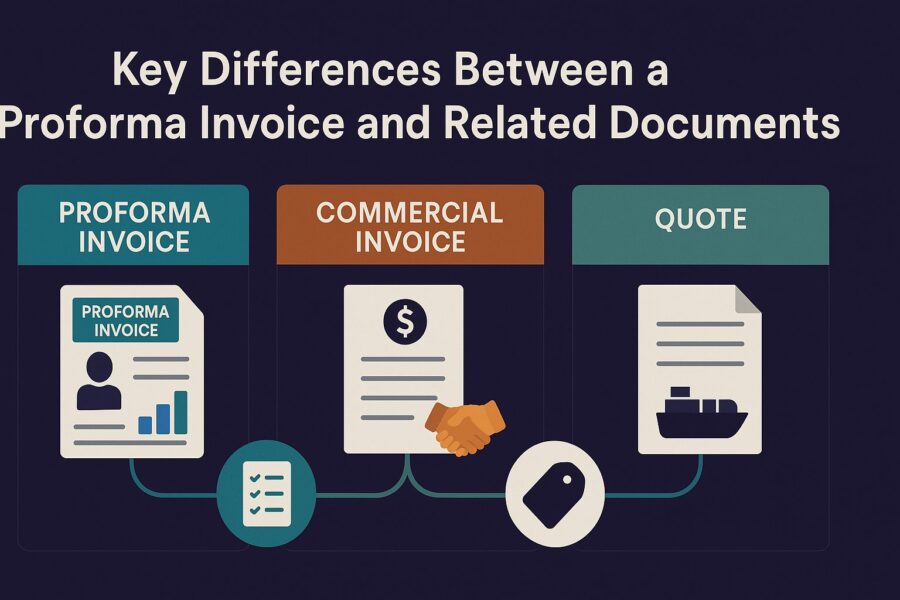
1. Proforma Invoice vs. Commercial Invoice
| Basis of Comparison | Proforma Invoice | Commercial Invoice |
| Purpose | Acts as a preliminary bill to inform the buyer about product details, price, and terms before shipment. | Serves as a final bill of sale issued after goods are shipped or services delivered. |
| Stage of Issuance | Issued before the delivery of goods or services. | Issued after goods/services are delivered. |
| Binding Nature | Non-binding, mainly for reference and confirmation. | Legally binding for payment and customs clearance. |
| Customs Use | Not used for customs clearance. | Required for customs declaration and clearance. |
| Payment | No payment is demanded; only an estimate is given. | Payment is expected based on agreed terms. |
2. Proforma Invoice vs. Quote
| Basis of Comparison | Proforma Invoice | Quote |
| Purpose | Formal, detailed document showing estimated cost and transaction details before shipment. | An informal estimate or price list provided before a formal agreement. |
| Detail Level | Includes complete product description, price, payment, and delivery terms. | Contains basic product/service cost, validity period, and conditions. |
| Binding Nature | More formal and often used in international trade, it can be a precursor to a sales agreement. | Generally non-binding and used for negotiation. |
| Usage | For pre-shipment documentation, customs, and the buyer's approval. | For price comparison, budgeting, and initial decision-making. |
| Format | Structured like an invoice. | Less formal, can be in letter/email format. |
3. Proforma Invoice vs. Bill of Lading
| Basis of Comparison | Proforma Invoice | Bill of Lading |
| Purpose | Provides estimated costs and details of goods before shipment. | Acts as a contract of carriage and receipt of goods between the shipper and the carrier. |
| Stage of Issuance | Before goods are shipped. | After goods are loaded onto the transport vessel. |
| Legal Status | Non-binding estimate for buyer’s confirmation. | A legally binding document used in shipping and freight transactions. |
| Content | Pricing, product details, payment terms, and delivery schedule. | Details of goods, consignee, vessel, and terms of transportation. |
| Customs Use | Sometimes used for customs pre-clearance, but not sufficient alone. | Essential for customs clearance and release of goods. |
💡Use the PICE App to track your business transactions and make smooth and secured payments.
What are the Benefits of Using a Proforma Invoice?
Proforma invoices boast many advantages and have become a useful tool in B2B transactions. These documents ensure:
- Clarity and Transparency: Proforma invoices provide details on the goods or services, like quantities, descriptions, price, taxes, shipping and payment terms. This assists buyers and sellers in having a clear picture of the transaction to be made before committing.
- Professionalism and Credibility: A professional and polished look of a proforma invoice develops trust among the customer and business associates.
- Makes Negotiations Easier: It gives room to negotiate and perhaps make corrections. Additionally, it can prevent a conflict by establishing a proper idea regarding costs, delivery schedules and payment terms.
- Aids in Financial Planning: By estimating total costs and expected payments, proforma invoices assist businesses in budgeting and cash flow forecasting. It is also useful in obtaining loans or credits as it shows the viability of the business.
- Accelerates Approval of Purchases: Proforma invoices serve as preliminary documents for internal review, speeding up purchase approvals within organisations.
- Minimises Mistakes and Disputes: Inspection of transaction details early permits errors to be removed prior to final charges, which helps avoid the needless disputes later at a high cost.
In general, knowing what is a proforma invoice helps to facilitate sales, communication, trust, and efficiency in the operation and financial matters of business deals. They come in quite handy in complicated or cross-border deals where clarity and documentation in advance are of paramount importance.
Challenges Associated With the Use of Proforma Invoices
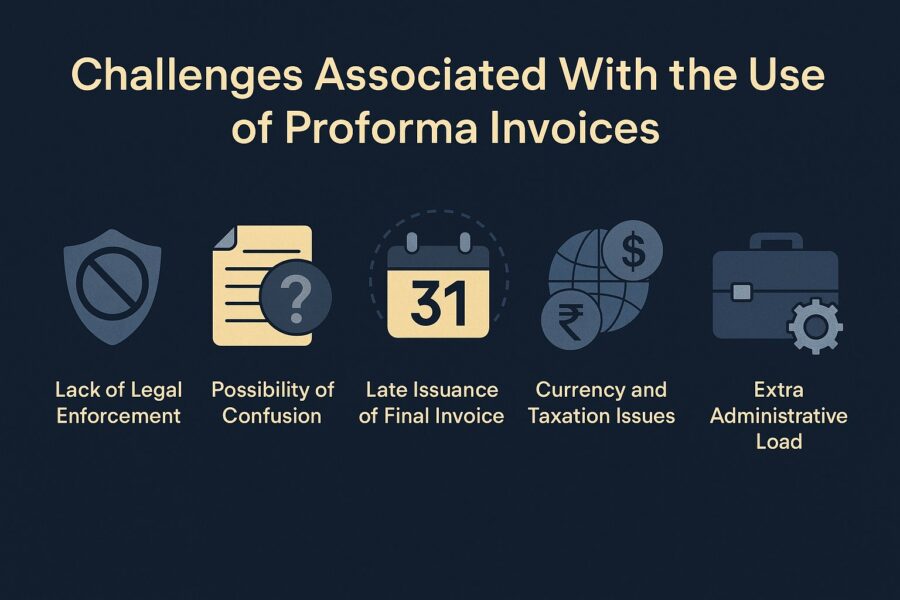
A leading study indicates that 44% of mid- to upper-mid-sized companies in the US experience monthly invoice delays of 25% or more. Indian exporters should be wary of this, as if the buyers experience invoice delays, it may result in delayed payments to all their international suppliers.
In the above-mentioned scenario, the use of proforma invoices can apparently be the best option to ensure the timely receipt of payments. However, there may be the following challenges:
- Lack of Legal Enforcement: Proforma invoices are typically non-binding and are legally unenforceable. Thus, they can be ineffective when it comes to ensuring immediate payment.
- Possibility of Confusion: The buyers may mistake the proforma invoices with the final invoice, which can cause confusion related to the payment date or obligation.
- Late Issuance of Final Invoice: The procedures to create proforma invoices may take precedence over formal billing, and this may affect accounting and auditors.
- Currency and Taxation Issues: The proforma invoices can lack final calculations of taxation and conversion to other currencies, which makes it difficult to pass through customs and to reconcile the finances.
- Trust and Verification Issue: There are some companies or banks that will not approve any payment on the basis of a proforma invoice merely because they doubt its authenticity or accuracy.
- Extra Administrative Load: The generation of proforma invoices can increase the administrative burden on the finance team. Therefore, the best strategy may be to hire expert business payment solution providers like Pice. Our standard invoice templates and payment terms are widely accepted in over 250 cities all across India.
Conclusion
Understanding what is a proforma invoice is a crucial preliminary document that outlines the details of goods or services before a sale is finalised. Knowing about proforma invoices helps buyers and sellers establish clear expectations, negotiate terms, and avoid surprises during the transaction.
Moreover, it acts as a good-faith estimate rather than a legal payment request, streamlining communication and ensuring transparency for smoother business dealings.








